45+ Sample Commercial Lease Agreements
-

Lease Agreement for Land
-

Commercial Lease Agreement Sample
-
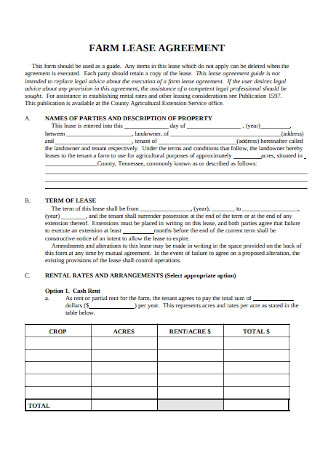
Farm Lease Agreement
-

Commercial Rental Lease Agreement
-

Site Lease Agreement
-

Residential Property Lease Agreement
-

Vehicle Rental Lease Agreement
-
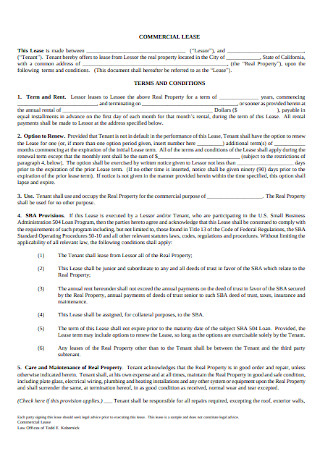
Sample Commercial Lease Agreement
-

Commercial Agriculture Lease Agreement
-

Commercial Property Lease Agreement
-

Standard Commercial Lease Agreement
-

Residential Lease Agreement
-
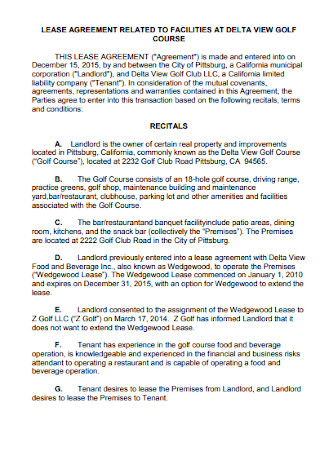
Restaurant Lease Agreement
-

Commercial Property Rental Agreement Sample
-

Property Lease Agreement
-

Restaurant Lease Agreement Sample
-

Commercial Landlord Lease Agreement
-

Lease Agreement for City Hall Restaurant
-

Sample Lease Agreement
-

Lease Agreement for Landing Property
-

Business Lease Agreement
-

Preliminary Agreement to Lease for Commercial Property
-

Land Lease Agreement Sample
-

Sample Residential Lease Agreement
-

Commercial Real Property Lease Agreement
-
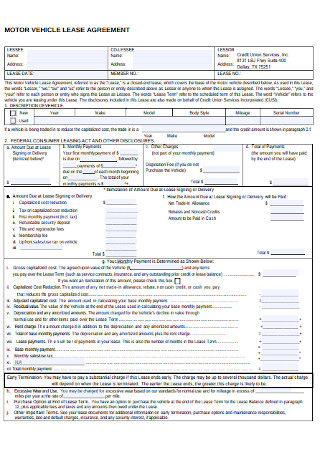
Motor Vehicle Lease Agreement
-

Rental Agreement for Motor Vehicles
-

Trucking Lease Agreement
-

Real Estate Lease Agreement
-

Real Estate Lease Agreement Sample
-

Residential Lease Agreement Sample
-

Standard Commercial Lease Agreement Sample
-

Basic Residential Lease Agreement
-
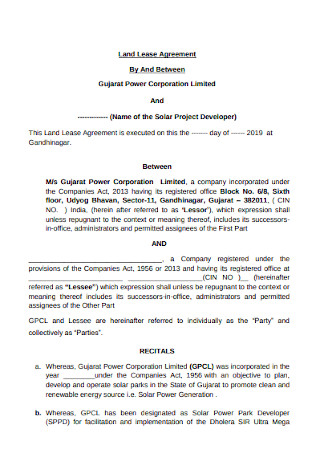
Land Lease Agreement
-

Farm Land Lease Agreement
-

Model Commercial Agriculture Lease Agreement
-

Commercial Land Lease Agreement
-

Vehicle Lease Agreement Sample
-

Commercial Land Lease Agreement Sample
-

Car Lease Agreement
-

Sample Vehicle Lease Agreement
-
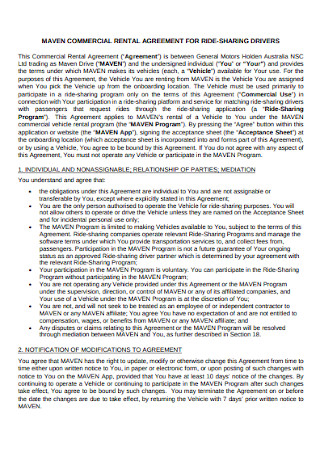
Commercial Rental Agreement for Ride Sharing Drivers
-

Residential Real Property Lease Agreement
-

Commercial Real Estate Lease Agreement
-
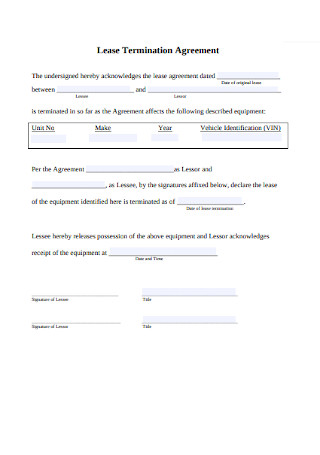
Commercial Lease Termination Agreement
-

Commercial Company Lease Agreement
-

Flexible Commercial Lease Agreement Worksheet
download now
What Is a Commercial Lease Agreement?
A commercial lease agreement sets forth the expectations and obligations for both the landlord and the tenant of the commercial space. It is a fundamental document that plays a key role in ensuring that the concerned parties are satisfied with the way the property is rented and maintained. While leases gradually change over time, it’s still important to establish some ground rules regarding the use of the property and the restrictions that tenants must adhere to. The agreement must define the scope of the lease term, the payment amount and method to follow, and the promises and limitations on how the property may be utilized by the occupant. Fluctuations in the real estate market often force these leases to change over time, so the agreement sees to it that tenants are well informed before the terms are executed.
The Importance of a Commercial Lease Agreement
It’s an unfortunate fact that a large segment of today’s rental market is not covered by any form of lease. Landlords end up losing thousands of dollars as the worth of their properties slowly deteriorate after failing to make a lease agreement that controls the rental, occupancy, and maintenance of the building. Tenancy agreements are important for businesses that aim to manage their commercial properties more effectively. It’s one way to avoid disputes and nasty legal battles caused by unstable relationships between landlords and tenants. As an owner of a commercial property, the lease agreement allows you to define your rental relationship with a client, specify the rental period covered by the lease, and bind both parties to the rights and responsibilities expressed in the agreement. Spelling out these obligations in a written document provides certainty and clarity for all parties to benefit from.
How to Write a Commercial Lease Agreement
Statista reports that the value of private office construction starts in the United States amounted to 8.12 billion dollars in the first half of 2019. Given this data, it’s safe to say that a lot of entrepreneurs have invested in commercial spaces to grow their wealth. But if you own a property that you want to rent out for commercial use, you need a lease agreement to document your relationship with a tenant. Lease agreements can cover the flow of the relationship for at least a few years, which is why it’s important to detail the duties of each party clearly in the document.
Step 1: Format the Document
Like any other business contract, the lease agreement must follow a particular format for consistency and formality reasons. Start by drafting the headings of each section of the lease. This will make it easy for readers to find the information they need without having to skim through the entire document. A clever tip is to use a bold or italic font to draw attention to key details in the lease. It’s also a good idea to outline the provisions you plan to include beforehand. That way, it would be easier to address key issues in a logical manner without adding anything unnecessary to the lease. Make sure to provide a signature space at the end of the last page for you and your tenant to sign.
Step 2: Cover the Necessary Provisions
Identify the property to be covered by the agreement. This includes the exact location of the leased space and a short description that may affect the ownership or legal rights of the property. Remember to name both the landlord and the tenant protected by the agreement correctly. The length of time the lease will be in effect must be specified clearly in the document in accordance with your jurisdiction. Other important details to note down in the agreement include the rent to be paid and when it is due, the deposit amount or fees if any, the consequences of late payment, and the provisions for renewing or ending the landlord-tenant relationship. Keep in mind that terminating the tenancy is essential for you to provide a 30-day eviction notice to a nonpaying or problem tenant. As long as the landlord adheres to the terms of the agreement, he or she may deliver the eviction.
Step 3: Add the Specific Terms and Conditions
Tenants are generally obliged not to destroy or damage the property throughout their stay. If any maintenance issues need to be addressed, occupants are encouraged to forward this concern to the property manager or owner immediately. Local laws must also be observed to avoid problems with state officials.
However, tenants are not the only ones who have an obligation to the lease. Landlords are expected to keep the property in a livable condition for the sake of the tenants’ health and security. Any violations must be handled accordingly between the landlord and the tenant before legal actions are taken to settle the issue. This is often done to avoid the costly consequences of a court hearing. If you have other matters you wish to point out in the lease, make sure it is written coherently for the reader to grasp.
Step 4: Have an Attorney Review the Lease
Before you present the lease for the tenant to sign, be sure to get legal advice from a real estate attorney to determine whether the terms you have defined in the agreement are enforceable. The attorney may also advise you on terms to include or omit from the lease to keep it as explicit as possible. In most instances, the attorney may suggest a number of provisions that are commonly found in lease templates for you to consider adding. This will help manage how the lease agreement should be interpreted in case you and your tenant choose to settle matters in court.
Commercial Leases vs. Residential Leases
Commercial leases differ from residential leases in several ways. For one, there are fewer consumer protection laws that a commercial lease is subjected to compared to a residential lease. Commercial leases almost always have their own form to meet the exact business requirements of a landlord as well. As for negotiation and flexibility, landlords are often eager to negotiate on new terms and extend special offers to a potential tenant to keep the business running. They usually have varied terms to ensure that the different needs of each tenant are met. It also comes as an advantage to the landlord when revisions to the rent amount, the length of the lease, and the allowable improvements have to be made. Creating this type of formal agreement can be complicated for most commercial property owners, but it is necessary to prevent the lease from being broken or modified so easily.
The Dos and Don’ts of a Commercial Lease Agreement
Commercial leases help lay down the rules and specifications that will govern the business relationship between a landlord and a tenant. Due to the weight of this arrangement, you can’t afford to make any mistakes in negotiating and drafting the agreement. This could affect the course of your operations and lead to a significant loss in profits. Whether you’re just beginning as an entrepreneur or hoping to improve your current process, writing an effective business agreement should be a top priority. Drafting a solid contract can be really simple when you follow these dos and don’ts:
Dos
1. Do start with a template.
People, including lawyers, rarely draft from scratch these days. Though it’s unlikely you’ll find one that’s a perfect fit for your situation, agreement templates do cover various subject areas that are closely related to the type of lease agreement you need to draft. Fortunately, templates are easy to customize in order to meet the needs of a user. Simply edit the content of the template to suit the circumstance you are in, and you should be good to go. If you start early with the writing process, you’ll have enough time to write a polished product that you can confidently execute as you begin a landlord-tenant relationship. Having a writing plan in place will also make it easier to fill the required content of your lease.
2. Do focus on the duties of each party.
While other parts of the lease are equally important, some homemade contracts tend to pay little attention to the things that each party is required to do. People often forget that this is one of the main reasons why the agreement exists in the place. Defining the exact roles that each party is obliged to perform is one way to clarify the terms and conditions of the lease agreement and keep everyone on the same page. Failure to do so will likely prompt one party to file a lawsuit against the other. It’s important to be as specific as possible so that both the landlord and the tenant would know what is expected of them.
3. Do consider termination but not penalties.
Either you or your tenant may want to terminate the agreement before the specified end date for whatever reason. It may seem tempting to penalize the party that decides on the untimely termination, but penalties are not enforceable in contract law because of their penal character. In case of a breach, certain concessions can be provided in the agreement as a consequence of early terminations. If the tenant chooses to bring the agreement to an end, those concessions may be forfeited.
4. Do write shorter sentences and paragraphs.
Concisely written legal agreements are always an advantage. Not only are they easier to read, but they also make key takeaway points much easier for people to remember. Long paragraphs with wordy sentences often make the reader bored and frustrated too quickly. The reader might even gloss over the main points of your agreement and miss the message you are trying to convey. Agreements that are hard to understand are basically useless in the arrangement. Thus, the best way to engage your audience is to keep your lease agreement short and straightforward.
5. Do use transition words.
Most legal documents are difficult to understand by the average person due to the scope that they cover. To help a reader follow your line of reasoning, using transition words like “however” and “in addition” can serve as a guide. These words help create a train of thought as you introduce new paragraphs in connection with the previous ones. This is especially important for leases that address all angles of the agreement through several provisions and stipulations that the reader must conform to. A logical flow of information can also make your writing appear less choppy and more cohesive.
Don’ts
1. Don’t neglect your audience.
Never forget who you are writing for. Commercial lease agreements allow property owners to explain the basic legal issues that apply to the client’s case. This will help determine the type of format and style to apply to the document. But you can’t assume that your readers would have a detailed knowledge of local and state laws. To cater to this need, it is your responsibility to make the terms of the agreement comprehensible to all. While there’s not enough room in a lease agreement to articulate the deepest aspects of the law, stating clear and rational points will make all the difference.
2. Don’t use vague words and ambiguous statements.
You’ll be surprised by how often people misinterpret an agreement because of how it is written. Words that have different meanings and sentences that are poorly constructed can cause problems down the road. For instance, if the rental lease agreement requires a tenant to pay for rent on a biweekly basis, it could either mean every two weeks or twice a week. Be very careful about the words you choose and how you put them together to formulate a sentence. If you think something can be taken differently by a reader, you can play it safe by rewriting the statement and making it more specific.
3. Don’t ignore the importance of restrictions.
Restrictions which specify the exact uses of the leased space play a crucial role in the agreement. For lease agreements in the retail and restaurant business, the document should indicate what the property may be used for. Tenants will also be informed of the prohibited uses to prevent unlawful activity from being carried out within the premises. If you wish to propose exclusive uses for the rental property, the agreement must be narrowly tailored to avoid unnecessary conflicts with potential tenants. Landlords do have a say on the type of rental applications they approve, so it only makes sense to maintain a central listing of all exclusive rights and prohibitions that have been granted to existing occupants.
4. Don’t forget to clear the lease of errors.
A common mistake that people commit is submitting the final draft without a proper read-through. Always take the time to read the draft of your agreement from top to bottom to ensure that the lease is clear, logical, and grammatically correct. Even the poor use of punctuations and conjunctions can affect the delivery of a message. Make sure that the document complies with the legal standards within your region as well. A contract may only be enforced in the court of law if it contains all the essential elements that make it legally binding. If the agreement fails to meet these criteria, you may want to apply the necessary changes before having it signed.
5. Don’t be afraid to ask for professional help.
Seek the assistance of an experienced attorney or legal expert if you need to. As a landlord with limited experience in the field, you might have a few questions and concerns that need to be addressed by someone knowledgeable. Educate yourself by studying the rules and regulations relevant to the landlord-tenant relationship. You may have to check with your attorney to verify this information, especially if you own several rental properties around the country. If a lawyer isn’t always available during the drafting process, you can submit a copy of the agreement to the attorney for a final assessment.
Since the commercial lease will likely administer the business relationship for years or even decades into the future, careful planning and research must be given to craft a legal agreement that best suits your business needs. It won’t hurt to use a commercial lease agreement template as a guide for drafting your own copy as well. Along with the assistance of a real estate attorney, you should be able to overcome many of the potential pitfalls that creep within commercial leases.
